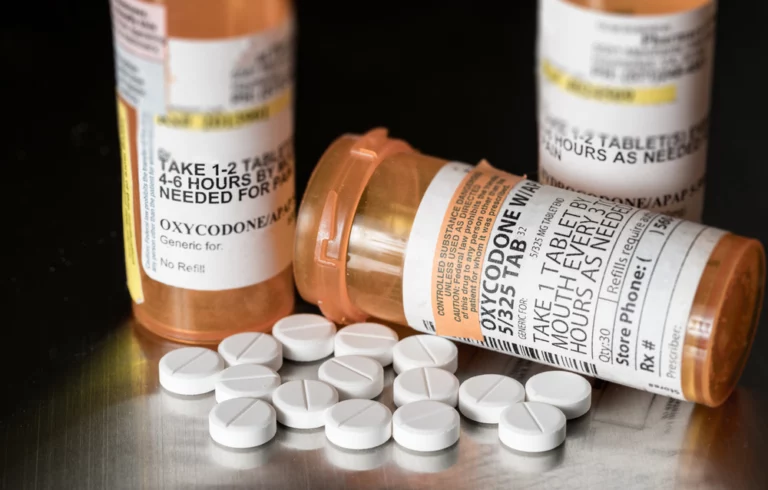Fentanyl, a powerful opioid, is associated with a high risk of addiction and poses significant challenges during withdrawal. For those struggling to break free from fentanyl dependency, understanding the importance of a safe detox process is crucial.
A medically supervised fentanyl detox offers the best chance of overcoming withdrawal symptoms and starting the journey to recovery with a solid foundation. In this article, we explore the complexities of fentanyl withdrawal and why a safe detox is essential for recovery.
Understanding Fentanyl Withdrawal and Detox
Withdrawal from fentanyl can be intense and challenging, and approaching detoxification with care and professional guidance is imperative.

Why Is Fentanyl Withdrawal So Challenging?
Fentanyl is a synthetic opioid that is estimated to be 50 to 100 times more potent than morphine, making it one of the most powerful and dangerous opioids available. Its high potency contributes to its effectiveness in managing severe pain, particularly in medical settings such as during surgery or for patients with chronic pain who have developed a tolerance to other opioids.
However, this same potency also makes fentanyl extremely addictive, leading to a high risk of severe physical dependence even after relatively short-term use. When an individual becomes dependent on fentanyl, their body adapts to the presence of the drug, and normal functioning becomes contingent on its continued use.
When someone who is dependent on fentanyl attempts to stop or reduce their use, they often experience a range of withdrawal symptoms, which can be both physically and emotionally overwhelming. These symptoms typically begin within a few hours of the last dose and can persist for days or even weeks, depending on the severity of the dependence.
Common withdrawal symptoms include intense cravings for the drug, which can drive individuals to seek out fentanyl despite the negative consequences.
Anxiety and agitation are also prevalent, as the brain struggles to regain balance without the drug’s influence. Muscle pain and stiffness are frequent complaints, often accompanied by restlessness and an inability to sit still, a condition sometimes referred to as “kicking the habit.”
Insomnia is another hallmark of fentanyl withdrawal, as the drug’s sedative effects are suddenly removed, leaving individuals unable to sleep despite extreme fatigue.
Gastrointestinal issues, such as nausea, vomiting, diarrhea, and abdominal cramping, are also common and can lead to dehydration and further discomfort.
Additionally, individuals may experience sweating, chills, dilated pupils, and rapid heartbeat, all of which contribute to the overall misery of fentanyl withdrawal. In severe cases, the psychological toll of withdrawal can include depression, irritability, and even suicidal thoughts, making it a particularly dangerous period for those attempting to quit.
What Is a Fentanyl Detox?
A fentanyl detox is a critical and medically supervised process designed to help individuals safely navigate fentanyl withdrawal, a potent synthetic opioid that can cause severe physical dependence. The primary goal of detoxification is to manage and alleviate the often intense and debilitating withdrawal symptoms that occur when someone stops using the drug.
By providing a structured and supportive environment, detox aims to ensure physical stabilization, reduce the risk of complications, and prepare individuals for the next steps in their recovery journey. Given the extreme potency of fentanyl and the severity of its withdrawal symptoms, attempting to quit without medical supervision can be dangerous and is strongly discouraged.
The detox process typically begins with a comprehensive assessment by healthcare professionals to evaluate the individual’s level of dependence, overall health, and any co-occurring medical or mental health conditions.
This assessment helps to create a personalized detox plan tailored to the individual’s specific needs. One of the key components of fentanyl detox is the use of medications to ease withdrawal symptoms and reduce cravings.
Medications such as buprenorphine, methadone, or clonidine are commonly used to stabilize the body and mind during this challenging period.
Buprenorphine and methadone, for example, are partial opioid agonists that can help mitigate withdrawal symptoms by activating the same receptors in the brain as fentanyl, but in a controlled and safer manner. Clonidine, on the other hand, is often used to manage symptoms like anxiety, agitation, and high blood pressure that can arise during withdrawal.
In addition to medication, therapy and counseling play a vital role in the detox process. Behavioral therapies, such as cognitive-behavioral therapy (CBT) and contingency management, are often introduced during detox to help individuals understand the root causes of their addiction, develop coping strategies, and build a foundation for long-term recovery.

These therapies can also address any underlying mental health issues, such as depression or anxiety, which may have contributed to or been exacerbated by fentanyl use. Counseling sessions provide emotional support and guidance, helping individuals navigate the psychological challenges of withdrawal and prepare for the next phase of treatment.
A supportive environment is another essential element of fentanyl detox. Detox programs are often conducted in inpatient or outpatient settings, depending on the severity of the addiction and the individual’s needs. Inpatient detox programs offer 24/7 medical supervision and a structured environment, which can be particularly beneficial for those with severe dependence or a history of relapse.
Outpatient programs, while less intensive, still provide regular medical check-ins and access to therapy, allowing individuals to continue their daily responsibilities while undergoing detox. Both settings aim to create a safe and nurturing space where individuals can focus on their recovery without the distractions or triggers of their everyday lives.
The detox process is not without its challenges, and withdrawal symptoms can vary in intensity and duration depending on factors such as the length of fentanyl use, the dosage, and the individual’s overall health.
Common withdrawal symptoms include intense cravings, muscle pain, insomnia, gastrointestinal distress, anxiety, and mood swings. While medications and therapy can significantly reduce these symptoms, the process can still be physically and emotionally taxing.
This underscores the importance of a compassionate and experienced medical team to guide individuals through detox and provide encouragement and reassurance. Learn more about our detox services.
The Importance of a Safe Detox for Fentanyl Withdrawal
A safe detox lays the groundwork for successful recovery by ensuring the individual’s physical and mental well-being during withdrawal.
The Risks of Unsupervised Detox
Attempting to detox from fentanyl without professional supervision can be dangerous. The intensity of withdrawal symptoms can lead to relapse or even life-threatening health complications. A supervised detox provides medical interventions and emotional support to address these risks effectively.
Medication-Assisted Treatment (MAT)
MAT plays a critical role in fentanyl detox by using medications like buprenorphine or methadone to ease withdrawal symptoms and reduce cravings. This approach allows individuals to detox more comfortably and with a lower risk of relapse, setting the stage for ongoing recovery efforts.
The Role of Supportive Care
Detox is not only about physical stabilization but also about emotional and psychological support. Therapeutic interventions during detox help address underlying issues related to substance use and prepare individuals for further treatment phases.

FAQs About Fentanyl Withdrawal and Safe Detox
Understanding the fentanyl withdrawal process and the detox options available can aid in making informed decisions regarding treatment.
What Are the Symptoms of Fentanyl Withdrawal?
Fentanyl withdrawal symptoms can vary but typically include intense cravings, sweating, muscle and bone pain, insomnia, diarrhea, vomiting, and severe anxiety. These symptoms usually start within hours of the last dose and peak a few days into the detox process.
How Long Does Fentanyl Detox Take?
The duration of fentanyl detox can vary based on individual factors such as the level of dependency, overall health, and the detox approach used. Generally, acute withdrawal symptoms can last 7 to 10 days, but some symptoms like cravings may persist longer.
Why Is a Safe Detox Important for Fentanyl Withdrawal?
A safe and well-structured detox is absolutely vital for individuals seeking to overcome fentanyl addiction, as it ensures a carefully managed and supportive withdrawal process. Fentanyl, being an extremely potent synthetic opioid, can cause severe physical dependence, and abruptly stopping its use can lead to intense and potentially dangerous withdrawal symptoms.
Without proper medical supervision, individuals may face significant health risks, including dehydration, electrolyte imbalances, cardiovascular issues, and psychological distress.
A safe detox process minimizes these risks by providing medical oversight, appropriate medications, and emotional support, creating a foundation for a smoother and more manageable transition into further treatment, such as rehabilitation or long-term therapy.
One of the primary reasons a safe detox is so crucial is that it addresses the physical and psychological challenges of withdrawal in a controlled environment. Withdrawal from fentanyl can be incredibly uncomfortable and, in some cases, life-threatening.
Fentanyl withdrawal symptoms such as severe muscle pain, nausea, vomiting, diarrhea, anxiety, insomnia, and intense cravings can overwhelm individuals, often leading them to relapse in an attempt to alleviate their suffering. A medically supervised detox ensures that these symptoms are carefully monitored and managed.
For example, medications like buprenorphine or methadone can be administered to ease cravings and stabilize the body, while other medications may be used to address specific symptoms like anxiety, high blood pressure, or gastrointestinal distress that often comes with fentanyl withdrawal.
This level of care not only reduces discomfort but also helps prevent complications that could arise from untreated withdrawal.

Creating a Supportive Environment for Detox and Recovery
For individuals undergoing fentanyl detox, a supportive environment is paramount. This involves:
Professional Supervision
Engaging in a program that offers 24/7 medical care ensures that any complications or severe symptoms are promptly addressed.
Comprehensive Care Plans
A successful detox program will include a personalized care plan that addresses both the immediate needs during fentanyl withdrawal and the ongoing requirements for sustained recovery.
Transition to Long-term Treatment
Detox is the first step in the journey to recovery. Transitioning from detox to a rehabilitation program that offers therapy, support groups, and skills development is crucial for maintaining sobriety.
Understanding the importance of a safe detox in fentanyl withdrawal cannot be understated. With professional guidance and a dedicated treatment plan, individuals can overcome the challenges of withdrawal and begin a healthier, addiction-free life.
If you or a loved one is facing the challenges of fentanyl withdrawal, reach out to Asheville Detox Center or call us today to explore a safe and supportive detoxification path. Take the first step towards recovery today and reclaim your health and future.







